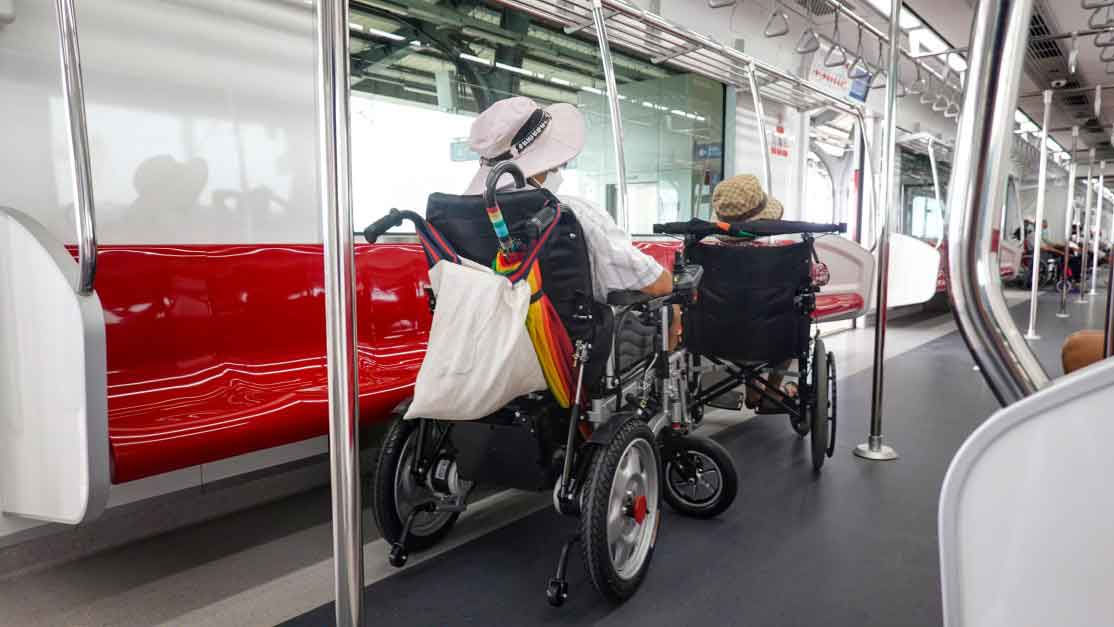The medical mobility industry and its customer base are constantly evolving. Understanding industry trends and challenges enable medical mobility businesses to provide the best products for their clientele while making smart decisions for their company.
Here we give you the top four trends shaping the medical mobility industry and how you can grow with these trends to shape your business.
1. Aging Geriatric Population
Medical mobility equipment users span every demographic. But the segment of the population that makes up the largest percentage of electric wheelchair users is undoubtedly the senior citizen group.
According to the United Nations, the population aged 65 and older is growing faster than any other age group. Because muscle and bone weakness is prevalent among these individuals, they see more falls than other groups and therefore utilize medical mobility devices more than other age demographics.
Because the older population bracket is growing quickly, the need for medical mobility equipment is also growing. People living at home, as well as those in assisted living facilities plus geriatric hospital patients, utilize mobility equipment daily. As the percentage of older citizens increases, so will the need for medical mobility distributors to produce this valuable equipment.
This need translates into industry security for medical mobility designers, distributors, and providers. Businesses that provide mobility equipment won’t see a shortage in patients needing these life-changing devices.
Even older individuals can maintain a sense of independence thanks to medical mobility. And equipment providers play a crucial role in this endeavor.
2. Electric Wheelchair Innovation
Designers continuously innovate mobility equipment to best serve the end-user. With the massive technological advances, the medical industry has seen over the last 10 years, it’s no surprise that the landscape of medical mobility equipment is advancing as well.
Electric and powered wheelchairs are constantly evolving. In 2019, researchers valued the electric wheelchair market at $2.9 billion. Experts expect that number to double by 2027. And as we stated above, the increasing geriatric population is a driving force behind the industry’s growth. With so many electric wheelchair users, we can expect to see innovation that makes these devices easier to use and safer for the user. Case in point: the Phoenix Instinct electric wheelchair.
Smart wheelchairs have taken the medical mobility industry by storm. A U.K.-based company, Phoenix Instinct, has designed a powered wheelchair fitted with sensors, cameras, and a sleek design that revolutionizes the standard for powered chairs. Its carbon-fiber design means lightweight handling and less battery usage. The device boasts intelligent sensors that automatically readjust the chair’s center of gravity. The chair also includes a host of other features that make it truly one-of-a-kind.
This forward-thinking innovation is causing us to rethink electric wheelchair design. Smart-powered chairs provide motorized wheelchair users with better access to economic, social, educational, and other opportunities, and that’s just the beginning.
3. Considerations for Bariatric Patient Mobility
According to the CDC, 42.4 percent of the U.S. population was obese in 2018, and 9.2 percent was designated as severely obese. With such a significant percentage of the population deemed obese, medical mobility equipment companies must provide products that safely and effectively serve this demographic.
Bariatric patients require mobility aids to bear greater weight than traditionally designed and constructed mobility aids. Medical mobility design for overweight and obese patients prioritizes safety, mobility, and comfort. But engineers also build these devices with durability and utility in mind.
Mobility aids that serve bariatric patients offer wider seats, heavy-duty supports, and increased weight capacities. Motorized mobility equipment might have bigger motors, more durable tires, and wider bases. Many motorized wheelchairs tailored for bariatric patients can support upwards of 600 pounds.
Medical mobility equipment businesses can serve more patients and move more products if they provide equipment for the bariatric population. These patients deserve mobility and independence. Showing them that you understand their unique needs will help you earn long-term clients and grow your business to meet these increasingly common needs.
4. Medical Mobility Financing
A patient’s ability to pay should not be a barrier to achieving independence through medical mobility equipment. Unfortunately, many patients require mobility devices to carry out everyday tasks but don’t have the up-front funds to pay for their equipment. As a result, they must choose substandard or old equipment or go without mobility devices altogether.
Thankfully, this doesn’t have to be the case. You as a medical mobility provider have the option to offer consumer financing options that can change the trajectory of your customers’ lives. Here’s how.
Consumer financing enables customers to bring home big-ticket items –– like powered wheelchairs, stairlifts, lift chairs, home elevators, vehicle adaptive equipment, and more –– the same day they walk into your store or visit your site for the first time. With consumer financing from United Consumer Financial Services, customers apply at checkout. Within minutes, they receive a notice of approval. Then, UCFS provides payment directly to the business within a few days, eliminating lapses in cashflow and your customer repays their loan in low monthly payments to UCFS for the life of the loan.
Many mobility businesses have begun offering consumer financing options to serve a larger demographic of customers. With financing through UCFS, you can move more inventory and provide life-changing mobility aids to your customers, even for customers with lower credit quality or cannot pay in full.
Conclusion
As you can see, the medical mobility industry anticipates change on the horizon. With the greater patient need and device innovation, medical mobility equipment companies are uniquely positioned to improve their patients’ quality of life truly.
When you’re ready to provide financing options that make mobility and independence accessible to more patients regardless of income, contact the team at United Consumer Financial Services. Our staff is happy to begin your application to offer consumer financing!
